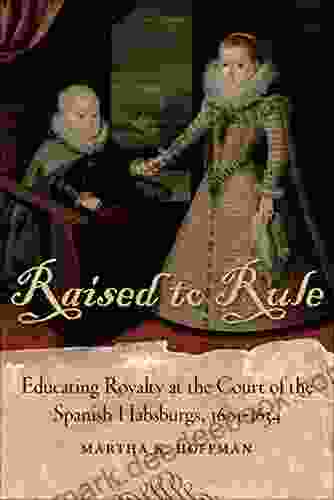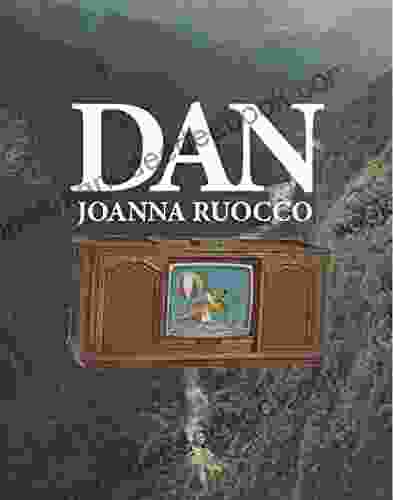Educating Royalty: A Look into the Court of the Spanish Habsburgs (1601-1634)

The education of royal children has always been a matter of great importance, as it shapes the future rulers of a nation. In the early modern period, the Spanish Habsburgs were one of the most powerful dynasties in Europe, and the education of their children was a reflection of their status and power.
5 out of 5
| Language | : | English |
| File size | : | 792 KB |
| Text-to-Speech | : | Enabled |
| Screen Reader | : | Supported |
| Enhanced typesetting | : | Enabled |
| Print length | : | 295 pages |
The curriculum for royal children at the court of the Spanish Habsburgs was comprehensive and demanding. It included a wide range of subjects, from the classics to theology, and from mathematics to music. The children were also expected to learn foreign languages, such as French and Italian.
The tutors who were responsible for educating the royal children were carefully chosen. They were typically scholars and theologians who were experts in their respective fields. The tutors were also expected to be role models for the children, and to instill in them the values of piety, obedience, and loyalty.
The methods used to educate the royal children were also varied. The children were often taught through a combination of lectures, readings, and discussions. They were also expected to participate in debates and other exercises that would help them to develop their critical thinking skills.
The education of the royal children at the court of the Spanish Habsburgs was a complex and demanding process. However, it was also a necessary process, as it prepared the children for the challenges of ruling a vast and powerful empire.
The Curriculum
The curriculum for royal children at the court of the Spanish Habsburgs was divided into two main parts: the humanities and the sciences. The humanities included subjects such as Latin, Greek, history, rhetoric, and poetry. The sciences included subjects such as mathematics, astronomy, and natural philosophy.
The humanities were considered to be more important than the sciences, as they were thought to be essential for the development of a well-rounded individual. The sciences were seen as being more practical, and were often taught to the royal children only after they had mastered the humanities.
In addition to the formal curriculum, the royal children were also expected to learn a variety of practical skills, such as riding, fencing, and dancing. These skills were considered to be essential for a future ruler, as they would allow them to participate in the activities of the court and to lead their armies into battle.
The Tutors
The tutors who were responsible for educating the royal children were carefully chosen. They were typically scholars and theologians who were experts in their respective fields. The tutors were also expected to be role models for the children, and to instill in them the values of piety, obedience, and loyalty.
One of the most important tutors at the court of the Spanish Habsburgs was the Jesuit priest, Juan de Mariana. Mariana was a renowned scholar and theologian, and he wrote a number of influential works on government and education. He was also a close advisor to King Philip III, and he played a major role in shaping the education of the royal children.
Another important tutor at the court of the Spanish Habsburgs was the humanist, Juan Luis Vives. Vives was a leading figure in the Spanish Renaissance, and he wrote a number of works on education, including The Education of a Christian Woman. Vives's writings had a major influence on the education of the royal children, and he helped to introduce new ideas and methods into the curriculum.
The Methods
The methods used to educate the royal children at the court of the Spanish Habsburgs were varied. The children were often taught through a combination of lectures, readings, and discussions. They were also expected to participate in debates and other exercises that would help them to develop their critical thinking skills.
One of the most common methods of instruction was the lecture. The tutor would deliver a lecture on a particular subject, and the children would take notes. The children were then expected to memorize the lecture and to be able to recall it later. This method of instruction was effective in imparting knowledge, but it was also relatively passive and boring.
Another method of instruction was the reading. The children were assigned readings from a variety of sources, including the Bible, the classics, and contemporary works. The children were expected to read the assigned readings carefully and to be able to discuss them with their tutor. This method of instruction was more active and engaging than the lecture, and it allowed the children to develop their critical thinking skills.
The children were also expected to participate in debates and other exercises that would help them to develop their critical thinking skills. Debates were often held on controversial topics, and the children were expected to defend their positions with evidence and reason. These exercises helped the children to develop their ability to think critically and to communicate their ideas effectively.
The Challenges
The education of the royal children at the court of the Spanish Habsburgs was not without its challenges. One of the biggest challenges was the sheer size of the curriculum. The children were expected to learn a wide range of subjects, and it was difficult for them to master all of them. Another challenge was the fact that the children were often taught in large groups. This made it difficult for the tutors to give each child the individual attention that they needed.
Despite the challenges, the education of the royal children at the court of the Spanish Habsburgs was a success. The children were well-educated and well-prepared for the challenges of ruling a vast and powerful empire.
The education of the royal children at the court of the Spanish Habsburgs was a complex and demanding process. However, it was also a necessary process, as it prepared the children for the challenges of ruling a vast and powerful empire. The curriculum, tutors, and methods used to educate the royal children were all carefully designed to produce well-rounded individuals who were capable of leading the Spanish nation.
5 out of 5
| Language | : | English |
| File size | : | 792 KB |
| Text-to-Speech | : | Enabled |
| Screen Reader | : | Supported |
| Enhanced typesetting | : | Enabled |
| Print length | : | 295 pages |
Do you want to contribute by writing guest posts on this blog?
Please contact us and send us a resume of previous articles that you have written.
 Book
Book Novel
Novel Page
Page Chapter
Chapter Text
Text Story
Story Library
Library Paperback
Paperback E-book
E-book Newspaper
Newspaper Paragraph
Paragraph Shelf
Shelf Preface
Preface Synopsis
Synopsis Footnote
Footnote Scroll
Scroll Codex
Codex Bestseller
Bestseller Library card
Library card Narrative
Narrative Biography
Biography Memoir
Memoir Reference
Reference Encyclopedia
Encyclopedia Dictionary
Dictionary Character
Character Resolution
Resolution Librarian
Librarian Catalog
Catalog Borrowing
Borrowing Reserve
Reserve Academic
Academic Reading Room
Reading Room Special Collections
Special Collections Interlibrary
Interlibrary Study Group
Study Group Dissertation
Dissertation Storytelling
Storytelling Awards
Awards Reading List
Reading List Larry P Arnn
Larry P Arnn Scott Sharpe
Scott Sharpe Christopher J Bosso
Christopher J Bosso L K Fisher
L K Fisher Trilok Kumar Jain
Trilok Kumar Jain Reanne Hemingway Douglass
Reanne Hemingway Douglass Biao Xiang
Biao Xiang John C Maxwell
John C Maxwell Mary Fichtner
Mary Fichtner Scott Shaw
Scott Shaw Shane Harris
Shane Harris Anthony Pell
Anthony Pell Elle Katharine White
Elle Katharine White Anthony Holdampf
Anthony Holdampf John Ruskin
John Ruskin Maggie Righetti
Maggie Righetti G R Matthews
G R Matthews Robert J Harris
Robert J Harris Michelle Wilde Anderson
Michelle Wilde Anderson Jefferson Glass
Jefferson Glass
Light bulbAdvertise smarter! Our strategic ad space ensures maximum exposure. Reserve your spot today!

 Henry David ThoreauThe Civic Foundations of Fascism in Europe: A Historical Analysis of the Rise...
Henry David ThoreauThe Civic Foundations of Fascism in Europe: A Historical Analysis of the Rise... Zachary CoxFollow ·6.5k
Zachary CoxFollow ·6.5k Melvin BlairFollow ·12.5k
Melvin BlairFollow ·12.5k Herman MitchellFollow ·8.6k
Herman MitchellFollow ·8.6k Deacon BellFollow ·12.3k
Deacon BellFollow ·12.3k Donovan CarterFollow ·16.1k
Donovan CarterFollow ·16.1k Liam WardFollow ·7.4k
Liam WardFollow ·7.4k Leon FosterFollow ·4.9k
Leon FosterFollow ·4.9k Blake BellFollow ·5.1k
Blake BellFollow ·5.1k

 Oscar Wilde
Oscar WildeDon't Stop Thinking About the Music: Exploring the Power...
Music is an...

 Floyd Richardson
Floyd RichardsonSnowman Story Problems Math With Santa And Friends
It's a cold winter day, and...
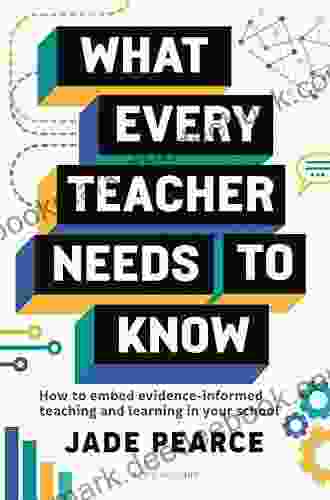
 W. Somerset Maugham
W. Somerset MaughamWhat Every Classroom Teacher Needs To Know: A...
Teaching is a challenging...
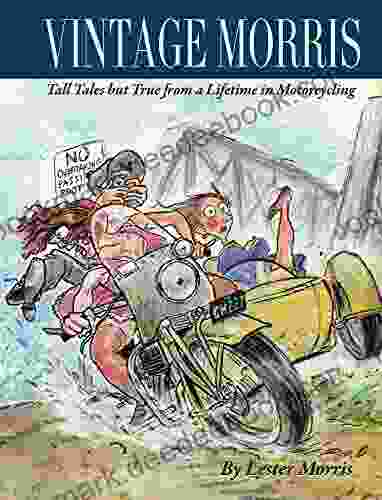
 Edgar Cox
Edgar CoxTall Tales But True: A Lifetime of Motorcycling...
I've been riding motorcycles for over 50...

 Chinua Achebe
Chinua AchebeBuni: Happiness Is a State of Mind
Buni is a beautiful...
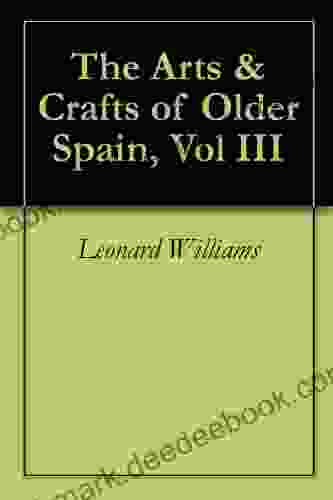
 Herman Melville
Herman MelvilleThe Arts and Crafts of Older Spain: Embodying the Essence...
In the heart of the Iberian...
5 out of 5
| Language | : | English |
| File size | : | 792 KB |
| Text-to-Speech | : | Enabled |
| Screen Reader | : | Supported |
| Enhanced typesetting | : | Enabled |
| Print length | : | 295 pages |


